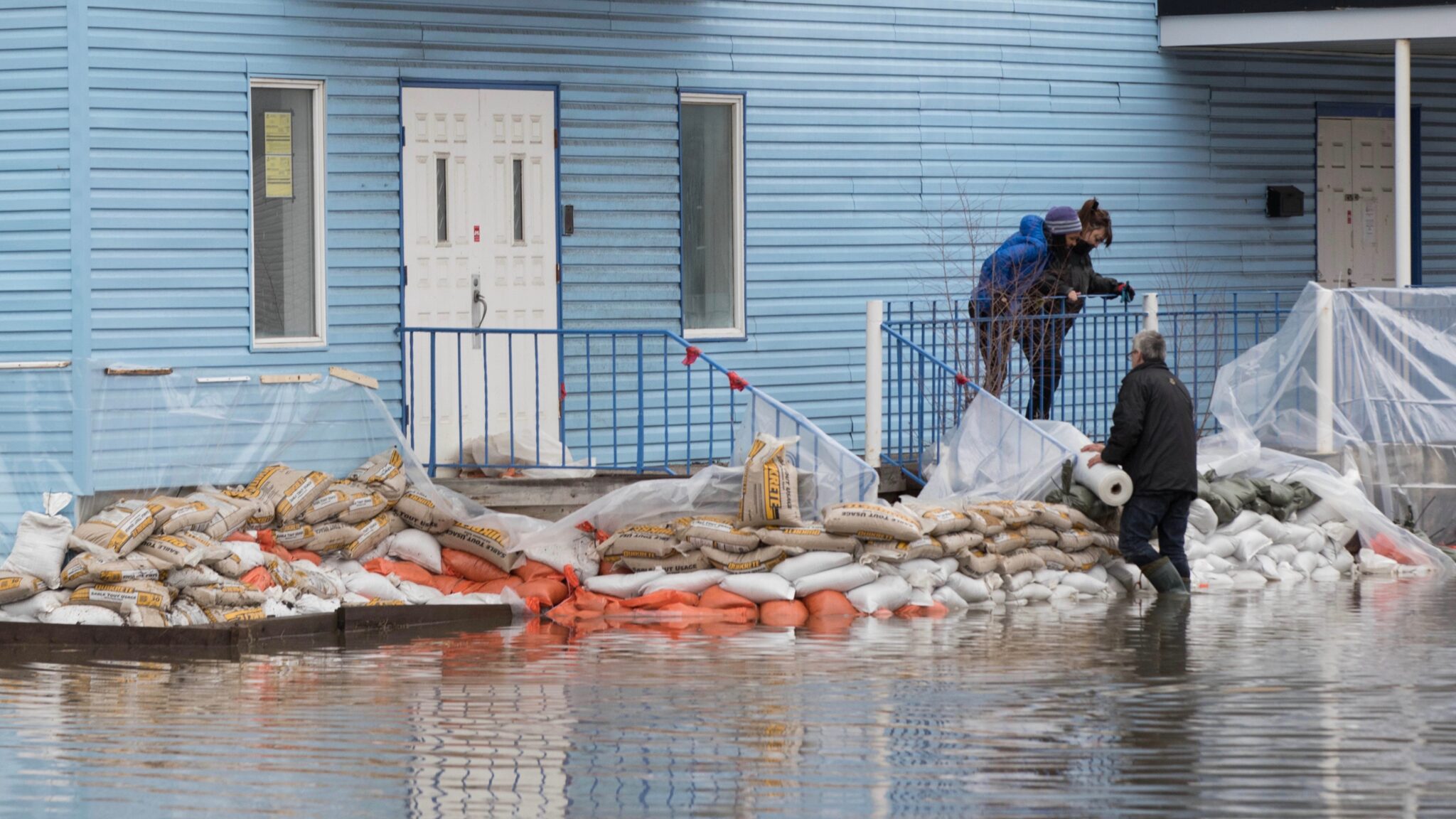

People place sand bags and plastic wrap around a church to prepare for spring flooding in Gatineau, Quebec, on April 20. LARS HAGBERG / AFP/Getty Images
The city of Gatineau, just across the river from Canada’s capital city of Ottawa was inundated by a 100-year flood in 2017. Then, this past April, the flooding was worse, which has prompted the government to tell people who lost more than 50 percent of the value of their home to just leave.
Canada has decided that the best thing for many people to do in the face of escalating costs from the climate crisis by limiting funds for rebuilding and telling people to move. It has caused entire neighborhoods to be removed, house-by-house, as the New York Times reported.
“Canadians are stubbornly beginning to reconsider the wisdom of building near flood-prone areas,” said Jason Thistlethwaite, a professor of environment and business at the University of Waterloo in Ontario, to the New York Times. “It’s taking government action to obligate people to make better decisions.”
After two floods in three years, many residents will not be able to sell their home and the government won’t let them rebuild.
“I lived through it … two years ago. I’m living it through it now. I don’t want to go through this again,” said Louise David in May, who put ,000 worth of work into her home after the 2017 floods, as the Canadian Broadcasting Corporation (CBC) reported.
David intended to walk away from her home in May. “Give me the money and I’ll run to the bank. I’ll buy a condo, very high up,” she said to CBC. “[0,000] in my pocket is better than zero in my pocket and having to live through this again.”
Under a provincial program in Quebec, the government will offer up to 0,000 to homeowners for flood damage compensation or a 0,000 buyout for them to move outside flood areas. If people take the money to rebuild, they will not be eligible for future compensation if their home floods again, according to CBC.
The attempt to mitigate future losses has precedent in Canada. In 2005, Quebec prohibited new constructions in the areas most likely to flood. Then in 2013, after the most expensive flooding in Canada’s history hit Alberta, residents in two neighborhoods of High River, south of Calgary, were issued mandatory buyouts. In 2015, the federal government made it harder for local governments to get money after floods. And British Columbia said people without flood insurance would be ineligible for government aid, as the New York Times reported.
This year, Canada warned that it would not pay for people who rebuild in danger zones. “[T]hey are going to have to assume their own responsibility for the cost burden,” Public Security Minister Ralph Goodale told reporters in April, according to the New York Times. “You can’t repeatedly go back to the taxpayer and say, ‘Oh, it happened again.'”
Canada’s approach to natural disasters that are getting worse as the climate crisis picks up steam is markedly different from the U.S., which will repeatedly pay people to rebuild and will invest billions to buffer sand dunes and river banks.
The intensity of flooding — in the Midwest this spring and from recent Hurricanes like Harvey, Irma and Dorian —has strained local budgets. The Natural Resources Defense Council found that the U.S. has over 36,000 homes that have been flooded and repaired at least five times. In North Carolina, where three hurricanes have hit in four years, roughly 1,100 homes have been flooded, on average, five times, as the New York Times reported.
Recent research has questioned the decision to rebuild and has advocated retreating from the coasts. A paper published in the journal Science said that retreat from floodplains is inevitable and should be done preemptively, as EcoWatch reported.
“What everybody would like is for the problem to not exist. But it does,” said David Foster, spokesman for the Canadian Home Builders’ Association, to the New York Times. “We expect government will behave maturely, and sometimes that means taking an approach that is difficult but wise.”

 233k
233k  41k
41k  Subscribe
Subscribe 